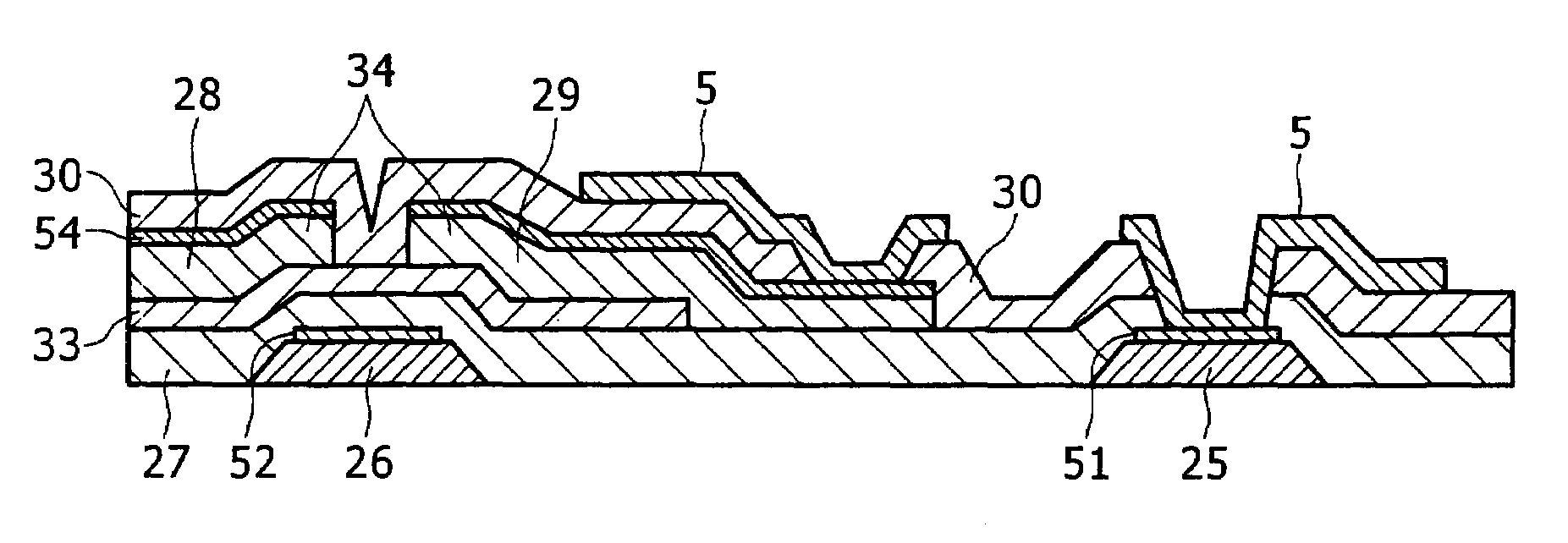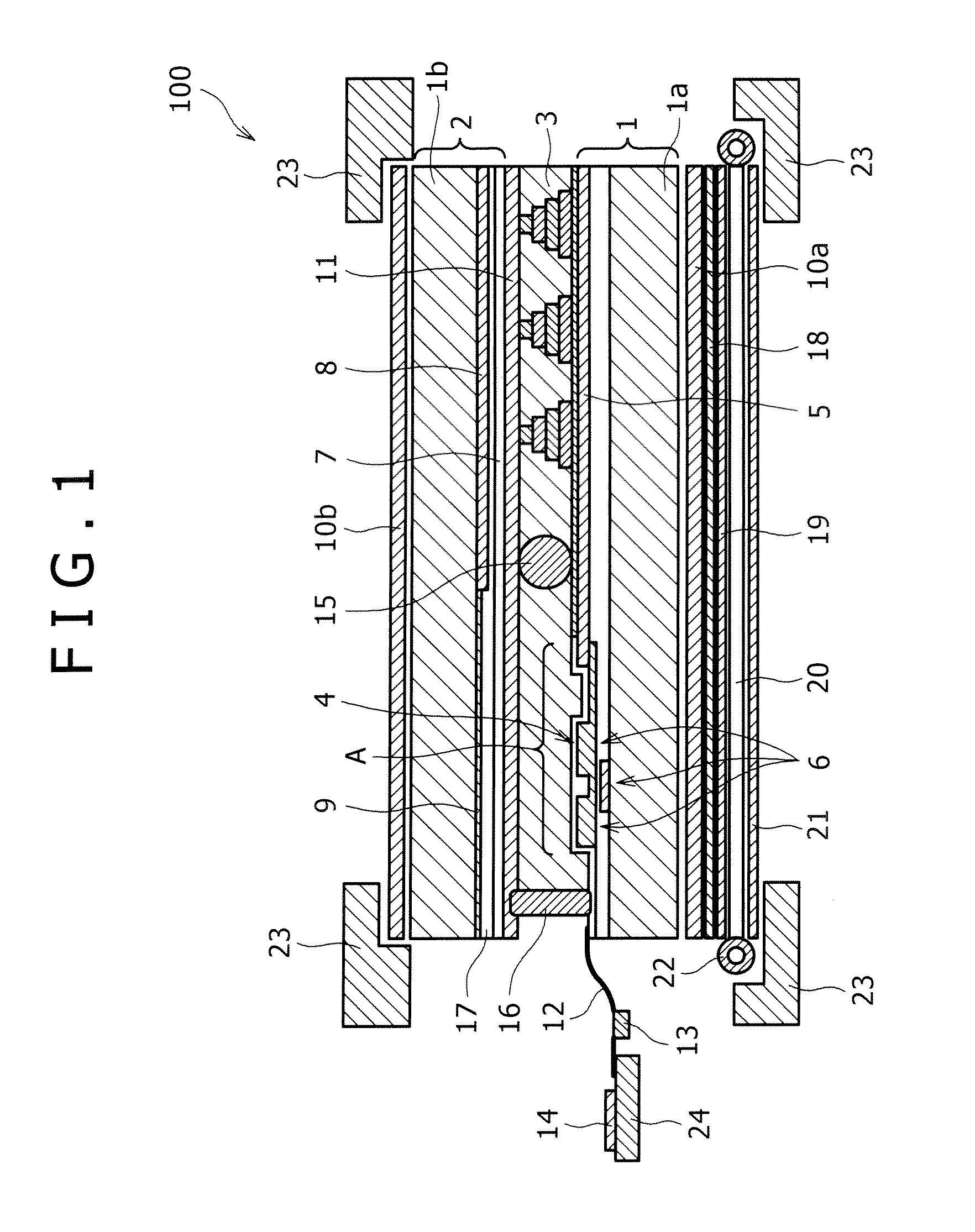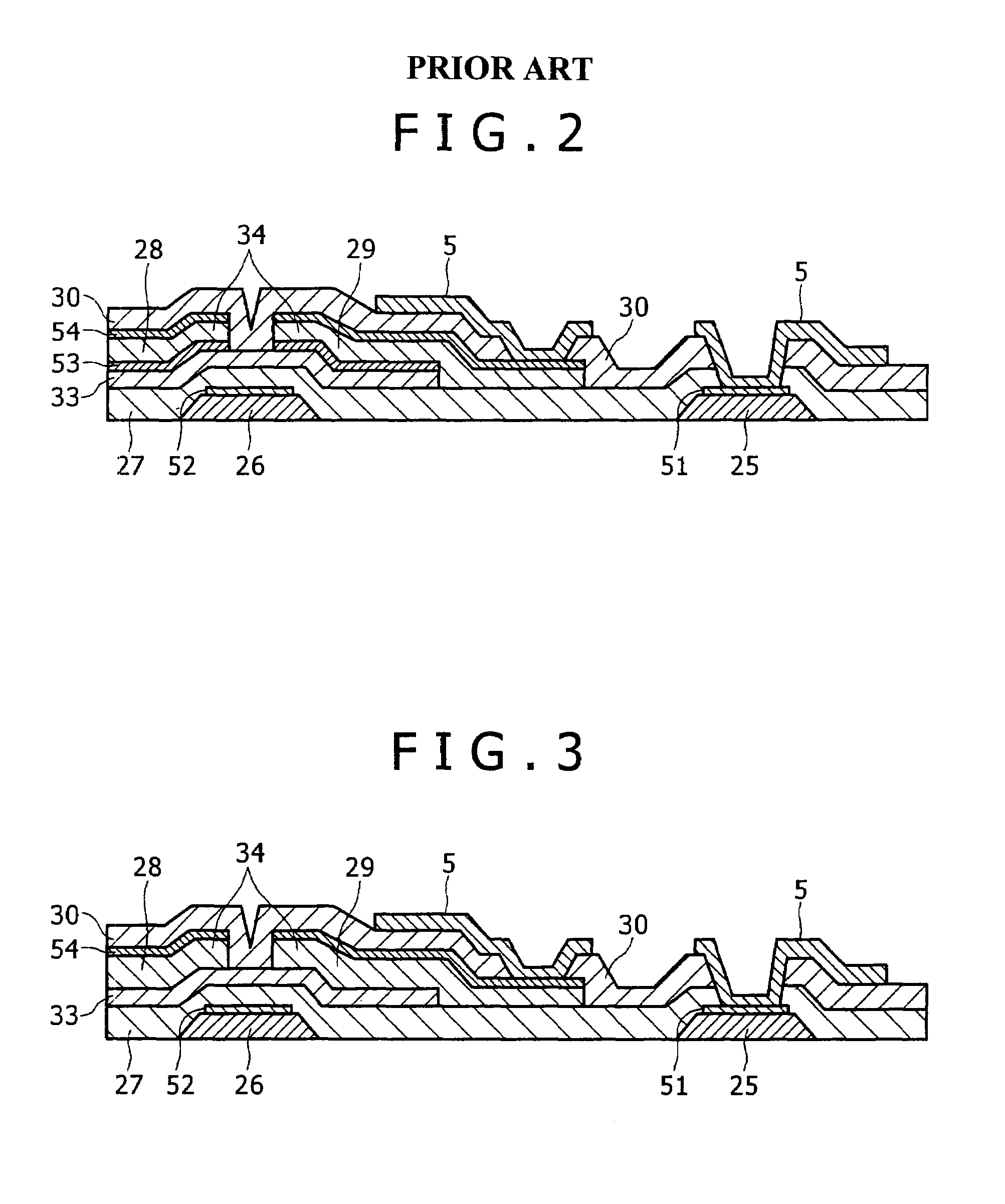Source/drain electrodes, transistor substrates and manufacture methods, thereof, and display devices
a transistor substrate and source electrode technology, applied in semiconductor devices, semiconductor device details, electrical apparatus, etc., can solve the problems of affecting the quality of displayed images, unable to establish an electrically ohmic contact if the aluminum oxide layer is exposed to oxidation, and high resistance to oxidation. , to achieve the effect of low resistance, high-performance display devices, and excellent productivity
- Summary
- Abstract
- Description
- Claims
- Application Information
AI Technical Summary
Benefits of technology
Problems solved by technology
Method used
Image
Examples
first embodiment
[0104]An embodiment of the amorphous silicon thin-film transistor substrates according to the present invention will be illustrated in detail with reference to FIG. 3.
[0105]FIG. 3 is a schematic cross-sectional view illustrating a preferred embodiment of the thin-film transistor substrates according to the present invention. In FIG. 3, components corresponding to those in the conventional thin-film transistor substrate in FIG. 2 have the same reference numerals.
[0106]A comparison between FIG. 2 and FIG. 3 shows that the conventional thin-film transistor substrate comprises the lower barrier metal layer 53 made typically of molybdenum (Mo) below the source / drain electrodes (FIG. 2); whereas the thin-film transistor substrate according to the present invention does not include the lower barrier metal layer 53 (FIG. 3). This embodiment enables direct connection between the aluminum alloy and the channel amorphous silicon thin film without the interposition of the lower barrier metal la...
second embodiment
[0125]A thin-film transistor substrate according to Second Embodiment has the same configuration as the thin-film transistor substrate according to First Embodiment as illustrated in FIG. 2, except for not arranging both the upper barrier metal layer 54 and the lower barrier metal layer 53. The thin-film transistor substrate according to First Embodiment does not include the lower barrier metal layer 53 but includes the upper barrier metal layer 54.
[0126]The thin-film transistor substrate according to Second Embodiment can be prepared by the procedure of First Embodiment, except for forming an aluminum alloy thin film (Al-2.0 atomic percent Nd) having a thickness of about 300 nm alone on a glass substrate 1a and not forming a molybdenum film. In the thin-film transistor substrate according to Second Embodiment, the Al—Ni alloy thin film is directly connected not only to the amorphous silicon thin film but also to the transparent pixel electrode. This embodiment can not only eliminat...
experimental examples
Experimental Example 1
[0127]Experimental Example 1 and after-mentioned Experimental Example 2 were conducted so as to verify that excellent thin-film transistor properties, for example, can be obtained even without the lower barrier metal layer by using the thin-film transistor substrate according to First Embodiment. An Al-2.0 atomic percent Ni alloy was used as the source / drain electrode in Experimental Examples 1 and 2, and this alloy thin film is hereinafter briefly referred to as “Al—Ni alloy thin film”.
[0128]In Experimental Examples, the nickel content, the thicknesses of the nickel-enriched layer and aluminum oxide film were determined by RF glow discharge emission spectrometry (GD-OES) and observation on cross-sectional transition electron micrograph, respectively. The nickel content of the nickel-enriched layer and the oxygen content in the aluminum oxide film were determined by compositional analyses of cross-sectional transition electron micrographs by EDX.
[0129]Observati...
PUM
| Property | Measurement | Unit |
|---|---|---|
| electrical resistivity | aaaaa | aaaaa |
| temperatures | aaaaa | aaaaa |
| temperatures | aaaaa | aaaaa |
Abstract
Description
Claims
Application Information
 Login to View More
Login to View More - R&D Engineer
- R&D Manager
- IP Professional
- Industry Leading Data Capabilities
- Powerful AI technology
- Patent DNA Extraction
Browse by: Latest US Patents, China's latest patents, Technical Efficacy Thesaurus, Application Domain, Technology Topic, Popular Technical Reports.
© 2024 PatSnap. All rights reserved.Legal|Privacy policy|Modern Slavery Act Transparency Statement|Sitemap|About US| Contact US: help@patsnap.com










